Due to several unique challenges home gardeners and nursery owners are often baffled when trying to incorporate roses into landscapes. Consequently, they ignore roses altogether or limit themselves to cultivars in the knockout or drift series. While knockout roses and drift roses are commonly planted throughout the lower south, and deservedly so, many other roses that will perform equally well should be considered for inclusion into landscapes and flower gardens.
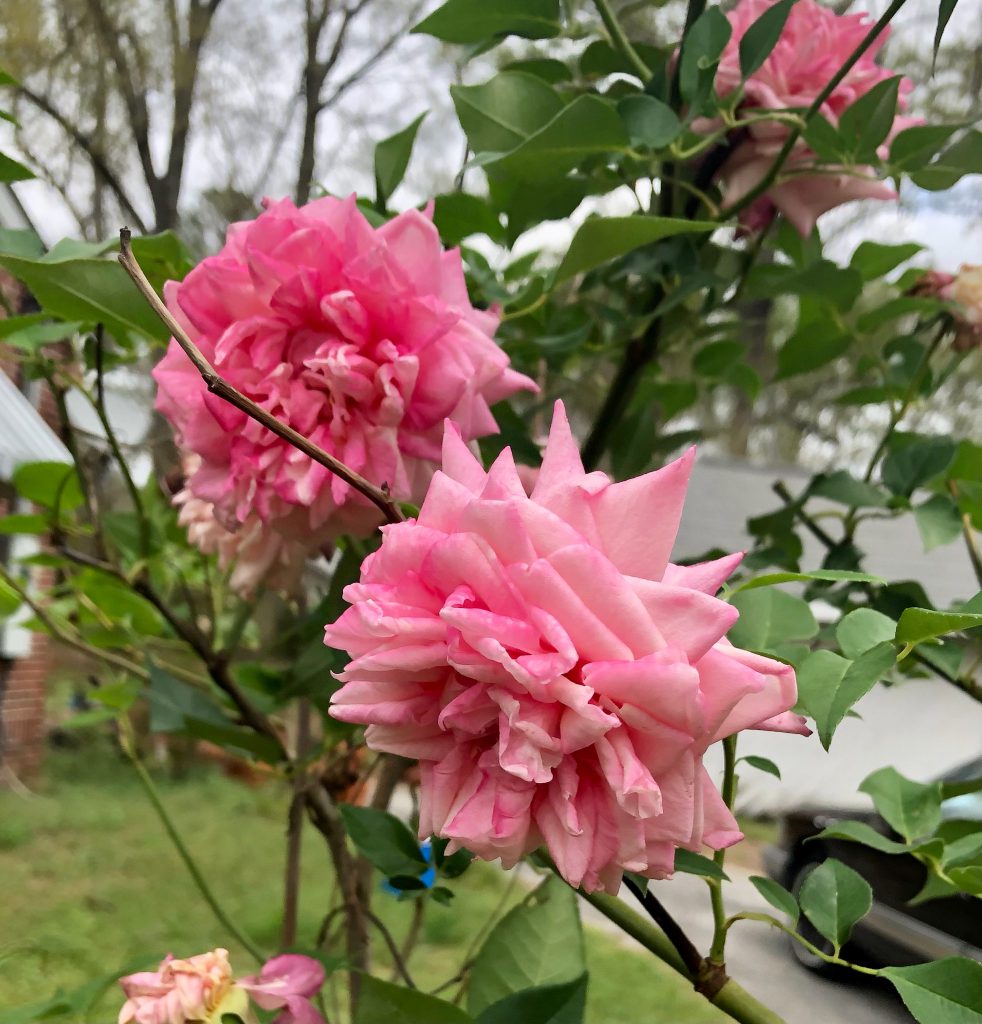
While there are several rose classes that will perform well throughout the Florida panhandle, the focus here will be on the Tea class. Roses in the Tea class originated in China over 1000 years ago. Many cultivars of ancient origin reached Europe through trade routes with Italy, England, and France. In the 1700s, the art and science of plant breeding was taking Europe by storm, so horticulturists were crossing the repeat-blooming Chinese roses with well-known European and Middle Eastern cultivars such as the Autumn Damask and Tuscany. Throughout the 1800s, many of these European and Chinese hybrid roses were created to grow around the Mediterranean. In the mid-1800s, Tea roses began to be bred with high centered form and long vase life, therefore aristocratic families throughout northern Europe began to grow them in greenhouses for rose exhibitions and competitions.
At the end of the 1700s and throughout the 1800s, a substantial quantity of Tea roses were brought to the southern USA where they were noted to be of easy culture outdoors. Thus, by the mid-1800s, they graced the gardens of both the humble and the aristocratic. These roses became popular foundation landscape plants from zone 7b to 10, all the way to Bermuda, where many “mystery roses” are found growing today.
Although the popularity of the Tea roses were eclipsed in the 1920s by the showier Hybrid Teas, they have regained popularity in mild-climate locales in the USA due to their ease of culture and prolific blooming habits. Most showy Hybrid Tea and Floribunda roses require fungicide sprays to thrive in the humid Florida Panhandle climate, but most of the Tea roses will thrive without the application of fungicide sprays of any kind. When established, most are drought and insect resistant, and flower well into November and December, unless an early hard freeze occurs. One small disadvantage to Tea roses is that they are more cold-tender than other classes of roses. Almost all these roses will survive well in zones 8a-10, with a few of the climbing types only suited for zones 9a and warmer. None of the Tea in the author’s garden were killed by the December hard freeze, and only a few showed damage.
While there are over 100 worthy Tea cultivars to recommend, this article will focus on five Tea roses:
Anna Jung: Bred in 1903 by Nabonnand, Anna Jung is a showy cream and pink tea in the tradition of other large Tea roses Marie van Houtte and Safrano. It makes a six by-five-foot shrub clothed in large apple-green leaves. Flower color is variable but ranges from cream and light pink to fuchsia in warm weather conditions. The scent is pungent, like freshly dried green tea leaves. This rose is highly vigorous and free flowering and tough, the author’s plant survived being partially uprooted by Hurricane Michael and is thriving again. Anna Jung was lost to commerce for decades in the United States, imported once again from France, where it has been available in the nursery trade continuously since its introduction. It is now sold by a few specialty rose nurseries in the southern USA.
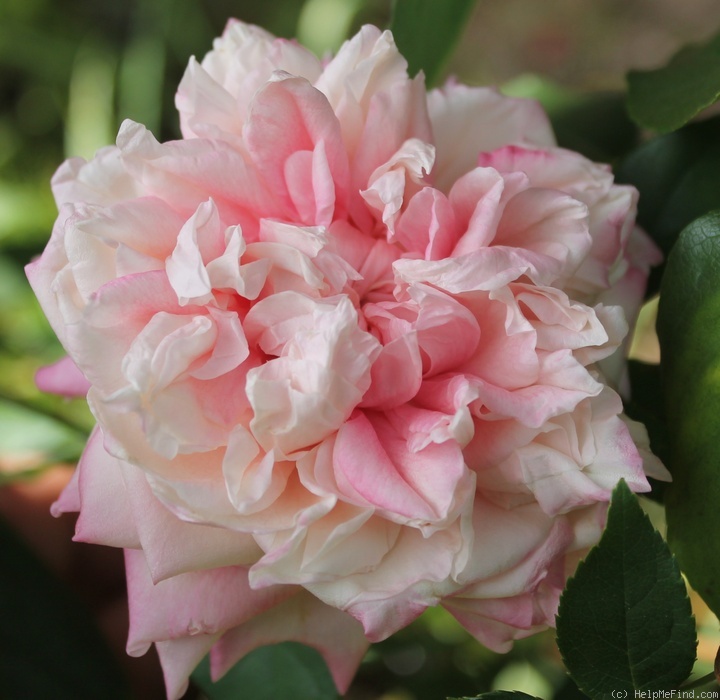
Le Pactole: This Tea rose was bred in 1834 and has been grown in the United States for many years. Some time in the 1930s-1950s it was no longer available commercially and was thought extinct but was found by rose hunters in California and re-introduced to the public in the 1990s. It has light yellow flowers, fading to white, with a lemon-tea scent that floats in the air. This prolifically blooming rose is rather thorny and makes a handsome plant 5 feet tall by 4 feet wide in zone 8a. This rose experiences some dieback under prolonged freezing conditions below 20 degrees F. It recovers well from setbacks and is relatively easy to grow.
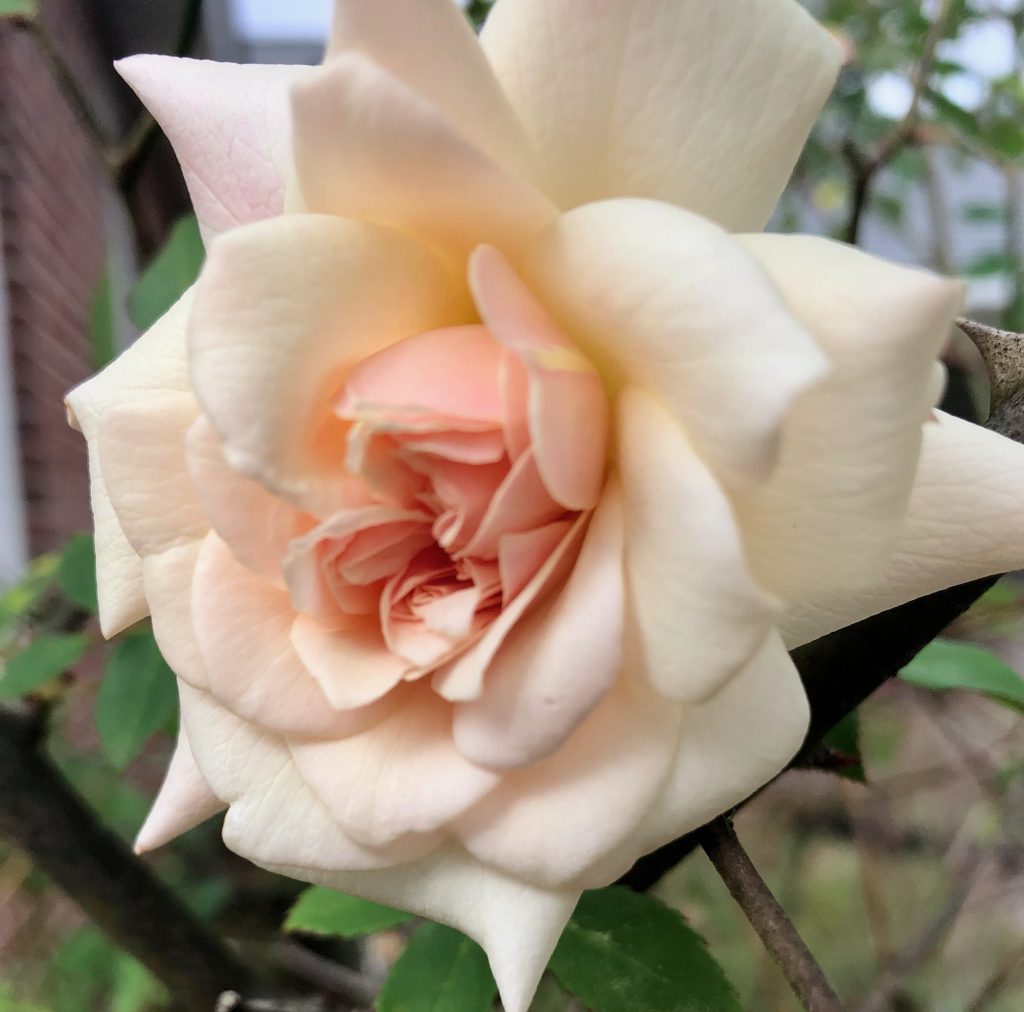
Rosette Delizy: In 1922, the Tea roses were on their way out, but Paul Nabonnand had one last trick up his sleeve with the introduction of Rosette Delizy. This rose was meant to make a splash in European greenhouse rose production with its perfectly formed yellow and pink flowers, but it made an unlikely hit in the Gulf South due to its disease resistance and vibrant colors. Although Rosette Delizy struggles with cold hardiness north of USDA zone 8a, it is perfectly suited to the Florida panhandle.
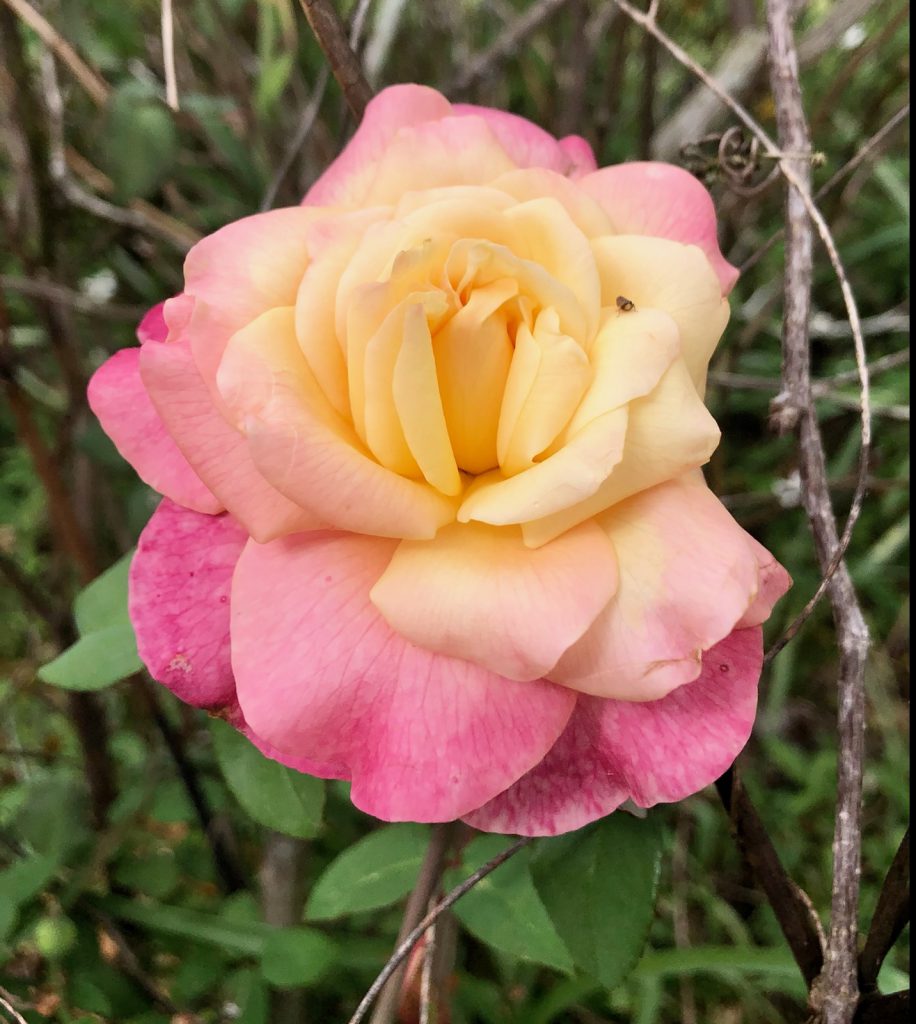
Safrano: Peachy and cream blooms adorn this 4–5-foot plant with an eight-foot-wide, spreading habit. The new growth is deep red, and the foliage is dark green. Safrano can produce the most beautiful flowers in the garden during spring and fall, but summer blooms are small and few-petaled. This rose is ideal for a foundational landscape planting because of its wide stature and nearly evergreen foliage in zone 8b and warmer. Safrano is also one of the oldest available Tea roses, being introduced in 1839.
Spice: Often thought to be one of the original tea roses, ‘Hume’s Blush Tea Scented China’ or the 1830s rose ‘Caroline’, the cultivar we now refer to as “Spice” or “Bermuda Spice” was re-introduced to the horticultural world in the 1970s from the island of Bermuda. Spice thrives in the sub-tropical climate of the Florida panhandle, staying evergreen and producing flowers almost year-round. Blooms are light pink, fragrant, and often borne in clusters. This is one of the most disease-resistant roses of all, rarely showing any incidence of blackspot or powdery mildew. Mature plants are drought and heat tolerant and sit at about 5 feet tall and 4 feet wide.
A few notes about Tea rose culture:
They do not like to be pruned back hard, during the first 5 years of growth, only remove dead or diseased wood. Since they are usually sold own root, they need 3-4 years in the garden to become well established. Lastly, Tea roses do not bloom much during the hottest part of the summer but make up for it during late winter and late fall.
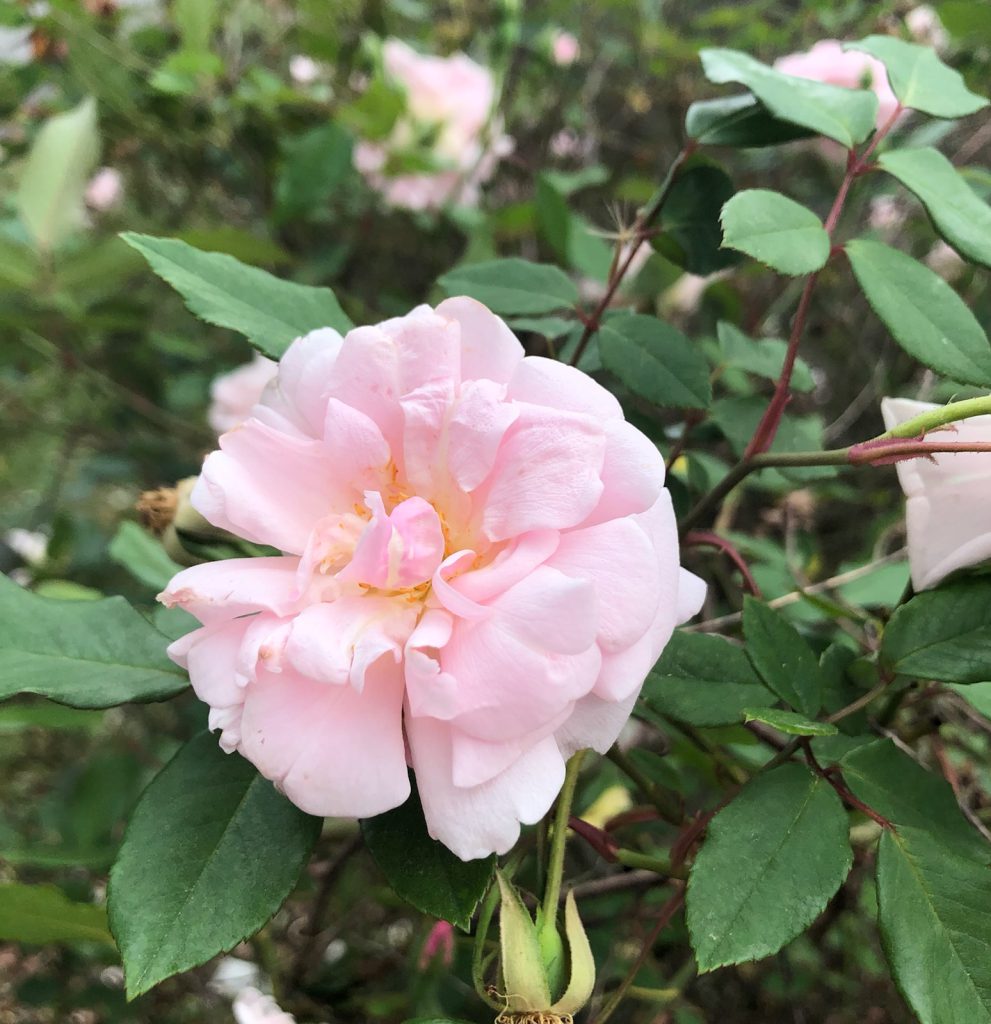
For more information about rose cultivation in Florida, refer to CIR 344: Growing Roses in Florida.
Here is a list of mail-order nurseries in the Southern USA that carry tea roses. This list is not exhaustive and does not contain nurseries on the west coast. If any nurseries were left off this list, it is not the author’s intention. No endorsement is made or implied.
Note: All images and contents are the property of UF/IFAS.
Source: UF/IFAS Pest Alert



